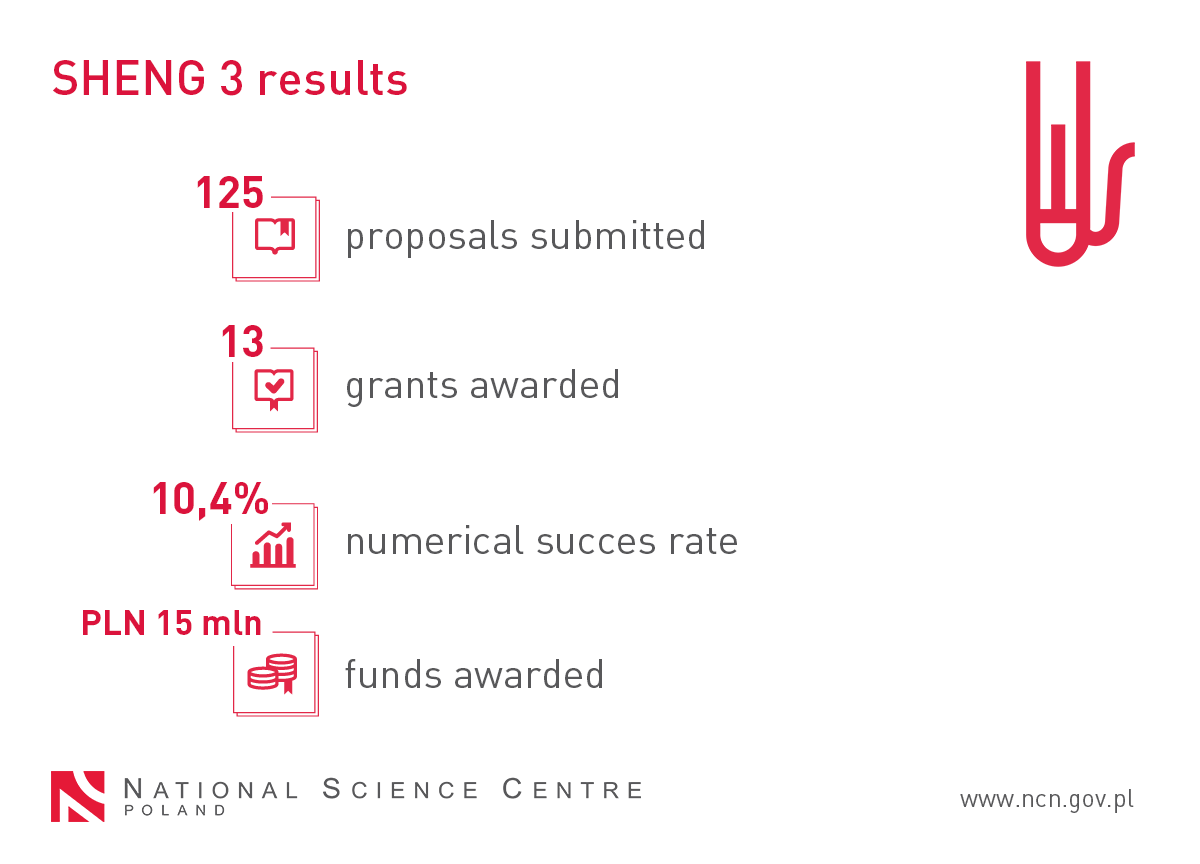Thirteen (13) projects with a total budget of PLN 15 million will be funded in the third iteration of the international SHENG call for Polish-Chinese research projects in selected disciplines of Physical Sciences and Engineering, as well as Social Sciences.
 The call attracted 125 proposals, out of which only 5 addressed topics in Social Sciences. Winners include 1 project in Arts, Humanities and Social Sciences and as many as 12 in Physical Sciences and Engineering.
The call attracted 125 proposals, out of which only 5 addressed topics in Social Sciences. Winners include 1 project in Arts, Humanities and Social Sciences and as many as 12 in Physical Sciences and Engineering.
New imaging methods: Physical Sciences at the service of Life Sciences
Cells are the basic structural and functional elements of all living organisms. Various applications in research, diagnostics and pharmacology often require us to perform quick and non-destructive functional testing on live cell cultures. Unfortunately, single cell-level research is time consuming if done on a whole population, fluorescent microscopy imaging is difficult because the samples need to be marked and the process is frequently toxic. A team from the Warsaw University of Technology, headed by Prof. Małgorzata Kujawińska, in cooperation with scientists based at the Nanjing University of Science and Technology, will work on new non-fluorescent imaging tools for single-cell analysis that will allow scientists to study large populations with sub-cellular precision, with easy sample preparation and no risk of contamination.
The main goal of a project submitted by Dr hab. inż. Dominika Wawrzyńczyk from the Wrocław University of Technology is to develop a new advanced optical bioimaging and bio-detection technique, using quick luminescence life-cycle mapping and specially designed luminescent nanoprobes that can perform the real-time detection and imaging of changes in their immediate environment. The new imaging method will find biomedical applications. The project relies on interdisciplinary experience in nanoengineering (brought in by the Polish team) and advanced optical bioimaging and biosensors (the Chinese team at Shenzhen University).
Science as a weapon against climate change
A team led by Dr hab. Piotr Matczak from the Adam Mickiewicz University in Poznań, will collaborate with researchers from the Chinese Academy of Sciences to address a very topical issue related to climate change: rising temperatures in urban areas. Using the example of Warsaw and Beijing, the scientists will look into how urban development is linked to an increase in temperatures and whether (and if so, how) urban heat islands can be neutralised or minimised by the appropriate planning of urban green areas and water basins. The project will also develop public policy recommendations to mitigate the phenomenon of heat islands in the two cities under study.
Rapid technological progress in recent years has not only led to new advances in space technologies, ICT and artificial intelligence, but also exacerbated the frequency and severity of natural disasters and man-made catastrophes. Climate change and extreme weather phenomena are among the most pressing challenges of our world. In order to try and address this challenge, scientists from the Wrocław University of Environmental and Life Sciences, led by Prof. Witold Rohm, teamed up with researchers from the China University of Mining under a joint initiative called “Destination Earth”. Their research project aims to create a virtual replica (digital twin) of Earth’s objects and systems, including its atmosphere, oceans and land masses, which would then be used to simulate and predict their response to a variety of conditions. Real-time data will come from global navigation satellite systems (GNSS), supported by artificial intelligence. The project might have an important impact on the future of our societies, especially in terms of protection against climate change and economic system collapse.
SHENG call
The international bilateral SHENG 3 call is organised by the National Science Centre in cooperation with the National Natural Science Foundation of China (NSFC). It is based on a parallel review procedure, which means that the two agencies conduct parallel eligibility checks and merit-based evaluation, and funding is only awarded to those proposals that are approved by both the NCN and the NSFC. SHENG 3 was open to basic research proposals in disciplines included in the following panels: ST1-ST3, ST6-ST7, ST9-ST10, and HS4.
The winning projects will be conducted in Poland and China; each will have two PIs: one in China and one in Poland. The grants can go toward funding research, salaries for research team members, scholarships for students and PhD candidates, purchase or manufacturing of research equipment and other necessary project expenses for the Polish part of the project. Read more about the call here.
Decisions
All the positive and negative decisions for proposals submitted under SHENG 3 have already been sent out. Please remember that the decisions of the NCN Director are delivered to the applicant electronically, to the e-mail address indicated in the proposal.
If the applicant is an entity mentioned in Article 27 (1)-(7) and (9) of the NCN Act, the decision will only be delivered to the Electronic Delivery Box (ESP ePUAP) provided in the proposal. If the applicant is a natural person and has listed an ePUAP address in the proposal, the decision will be sent to that address. Otherwise, a message will be sent to the applicant’s indicated e-mail account, containing a link from which the decision of the NCN Director can be downloaded.
The funding decisions of the Director of the National Science Centre are also communicated to the principal investigator and, if the applicant is a natural person, to the host institution indicated in the proposal. If you do not receive a decision, please make sure that the address (ESP, ePUAP, e-mail) listed in your proposal is correct. If not, contact the person in charge of the proposal, as indicated in the OSF submission system.
